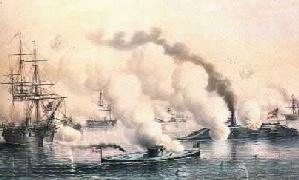Gary Gentile

Gary started his diving career in 1970, and began avid wreck diving
the following year. Shipwrecks fascinated him, deep diving lured him.
By
1974 he was diving the Andrea Doria. Since then he has made more than
150
dives to this famous wreck. He was the first scuba diver to enter the
First
Class Dining Room, from which he recovered many examples of elegant
china.
He also recovered and restored hundreds of pieces of jewelry and
souvenir
items from the Gift Shop, located at a depth of 220 feet. By now he has
made thousands of decompression dives.
During the past two decades he has been intimately involved with
shipwreck
research, and has compiled an extensive library of photographs,
drawings,
plans, and original source materials. He has conducted surveys on
numerous
wrecks, some of which have been drawn in the form of large-sized prints
suitable for framing.
Over the years he has rescued from the ravages of the sea many
thousands
of artifacts, making him a leading authority in recovery techniques. He
has gone to great lengths to preserve and restore these relics from the
deep, and to display them to tens of thousands of interested people,
divers
and nondivers alike. Throughout the years, these artifacts have been
exhibited
at various museums and local, club oriented shows.
Gary is the author of more than two dozen books, which include
novels
of science fiction and adventure, and nonfiction volumes on wreck
diving,
and nautical and shipwreck history. He has published scores of articles
in magazines and newspapers. Thousands of his photographs have appeared
in books, periodicals, newspapers, advertisements, corporate reports,
museum
displays, postcards, film, and television. There is also another side
of
Gary's life: one of an outdoor adventurer. In this guise he has climbed
rock and mountains, backpacked through country high and low, bivouaced
in the snow, and paddled his canoe through rapids and untamed
wilderness--sometimes
for weeks at a time, completely self sufficient. He has captured this
challenging
outdoor scenery in wonderful color.
Through slides and video, experience the Civil War ironclad Monitor
as it lies on the sandy bottom, and learn about Gary's six year battle
with the National Oceanic and Atmospheric Administration, and the
precedent
setting court decision which forced NOAA to make the wreck accessible
to
the public.
USS Monitor: A Civil War Legacy
 This
combination
slide and video presentation is a visual extravaganza for people of all
ages, divers and armchair explorers alike. Sunk in clear Gulf Stream
water
off Cape Hatteras, North Carolina, the Civil War ironclad Monitor lies
on a white sandy bottom in an area where the visibility often exceeds
100
feet. The wreck abounds with colorful fish and tropical marine
encrustation.
But what appears with such serenity is in actuality a dynamic process
in
motion, the forces of nature in collision, the best and the worst
of man's character in opposition.
This
combination
slide and video presentation is a visual extravaganza for people of all
ages, divers and armchair explorers alike. Sunk in clear Gulf Stream
water
off Cape Hatteras, North Carolina, the Civil War ironclad Monitor lies
on a white sandy bottom in an area where the visibility often exceeds
100
feet. The wreck abounds with colorful fish and tropical marine
encrustation.
But what appears with such serenity is in actuality a dynamic process
in
motion, the forces of nature in collision, the best and the worst
of man's character in opposition.
The Monitor's saga is long and ongoing. At the Battle of Hampton
Roads
she fought the CSS Virginia to a standstill: the first clash of
ironclads,
and a battle that spelled the end of wooden, sail-powered navies. Her
loss
in a December gale changed her from a machine of war to a monument
depicting
the futility of war. Now she fights her battles against the corrosive
nature
of the sea, and stands as an example of how freedom can be lost to
bureaucracy
if one refuses to fight for one's rights.
Gary's position with respect to the Monitor National Marine
Sanctuary
is unique. Alone and at his own expense, he waged a  five-year
legal battle against the National Oceanic and Atmospheric
Administration,
which refused American citizens the right to see the wreck site with
their
own eyes. His battle culminated in a widely publicized hearing in 1989
in which he emerged with a triumphant victory for divers across the
nation,
for NOAA was forced to concede that people have the right to look at
the
Monitor despite NOAA's wishes to the contrary.
five-year
legal battle against the National Oceanic and Atmospheric
Administration,
which refused American citizens the right to see the wreck site with
their
own eyes. His battle culminated in a widely publicized hearing in 1989
in which he emerged with a triumphant victory for divers across the
nation,
for NOAA was forced to concede that people have the right to look at
the
Monitor despite NOAA's wishes to the contrary.
He has visited the wreck site regularly since 1990, capturing the
wreck
on film and videotape as it disintegrates before our very eyes--as all
shipwrecks do. This presentation combines the best of both media, and
allows
the author to examine the wreck in detail so the viewer can have a
better
understanding of the site and of the changes that occur on it.
Here is history at its best, and history in the making.
Return to NDA
Homepage
 This
combination
slide and video presentation is a visual extravaganza for people of all
ages, divers and armchair explorers alike. Sunk in clear Gulf Stream
water
off Cape Hatteras, North Carolina, the Civil War ironclad Monitor lies
on a white sandy bottom in an area where the visibility often exceeds
100
feet. The wreck abounds with colorful fish and tropical marine
encrustation.
But what appears with such serenity is in actuality a dynamic process
in
motion, the forces of nature in collision, the best and the worst
of man's character in opposition.
This
combination
slide and video presentation is a visual extravaganza for people of all
ages, divers and armchair explorers alike. Sunk in clear Gulf Stream
water
off Cape Hatteras, North Carolina, the Civil War ironclad Monitor lies
on a white sandy bottom in an area where the visibility often exceeds
100
feet. The wreck abounds with colorful fish and tropical marine
encrustation.
But what appears with such serenity is in actuality a dynamic process
in
motion, the forces of nature in collision, the best and the worst
of man's character in opposition.

 five-year
legal battle against the National Oceanic and Atmospheric
Administration,
which refused American citizens the right to see the wreck site with
their
own eyes. His battle culminated in a widely publicized hearing in 1989
in which he emerged with a triumphant victory for divers across the
nation,
for NOAA was forced to concede that people have the right to look at
the
Monitor despite NOAA's wishes to the contrary.
five-year
legal battle against the National Oceanic and Atmospheric
Administration,
which refused American citizens the right to see the wreck site with
their
own eyes. His battle culminated in a widely publicized hearing in 1989
in which he emerged with a triumphant victory for divers across the
nation,
for NOAA was forced to concede that people have the right to look at
the
Monitor despite NOAA's wishes to the contrary.